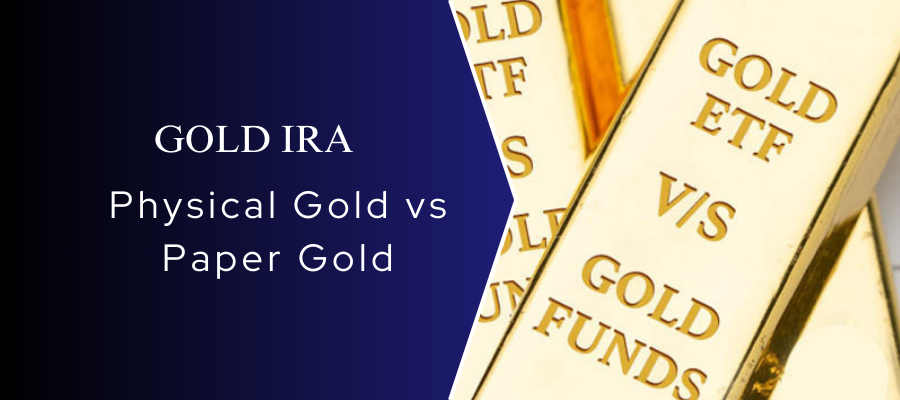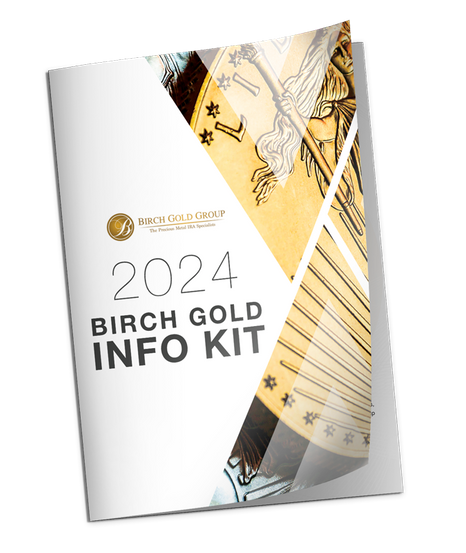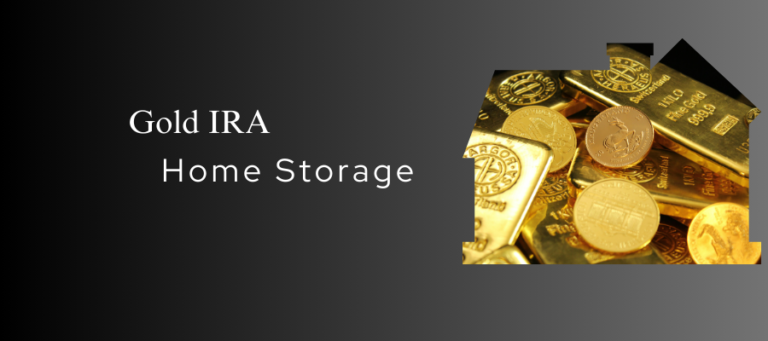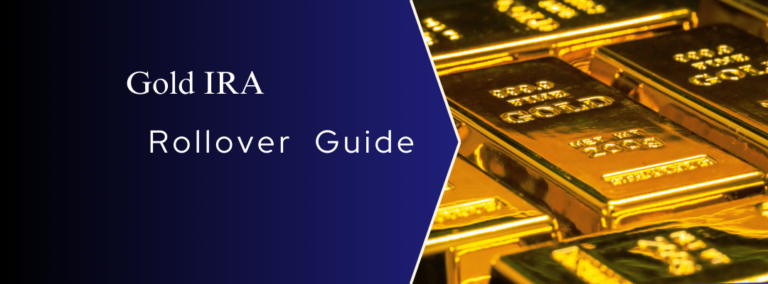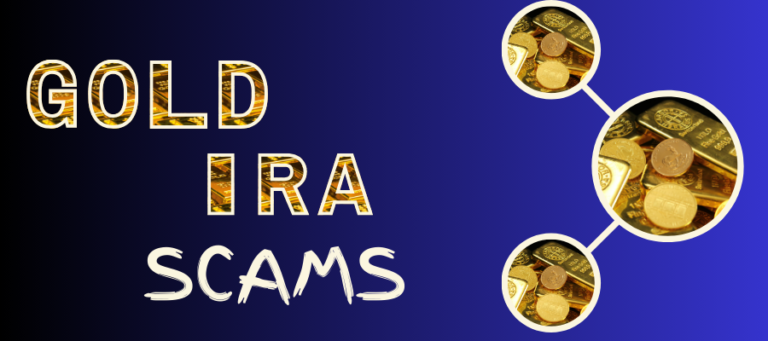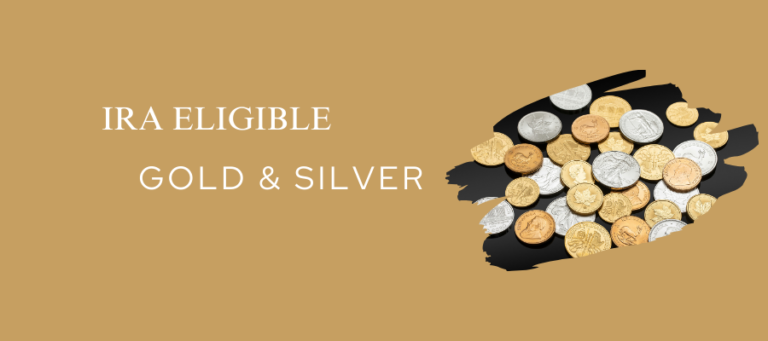“Physical Gold vs Paper Gold: Which One Suits You the Most?”
Disclosure: We are reader-supported. If you buy through links on our site, we may earn a commission. Learn more.
Gold has long been regarded as a symbol of wealth and stability, revered across cultures and centuries for its enduring value. As a tangible asset, it offers a sense of security unmatched by most other forms of investment.
In modern times, the allure of gold has not diminished; instead, it has diversified into various forms, presenting investors with multiple ways to hold and benefit from this precious metal. Among these options, physical gold and paper gold stand out as the most prominent and commonly considered avenues.
Physical gold refers to the tangible form of the metal, such as gold bars, coins, and jewelry. Its ownership is straightforward—you buy it, you hold it, and it’s yours to keep, store, or trade.
On the other hand, paper gold represents financial instruments like gold ETFs (Exchange-Traded Funds), gold futures, and shares in gold mining companies. These options allow investors to gain exposure to gold prices without physically holding the metal, often providing greater convenience and liquidity.
Understanding Physical Gold
Definition and Forms
Physical gold refers to the tangible, real form of gold that can be held, stored, and traded as a physical asset. The most common forms of physical gold include:
- Gold Bullion: This category includes gold bars and ingots, which are valued primarily based on their weight and purity. Gold bars come in various sizes, ranging from small gram bars to large kilogram bars, and are typically 99.5% to 99.9% pure.
- Gold Coins: Unlike bars, gold coins often carry numismatic value in addition to their intrinsic gold content. Popular gold coins include the American Gold Eagle, Canadian Gold Maple Leaf, and South African Krugerrand. These coins are often used as legal tender and are favored by both collectors and investors.
- Jewelry: While not the primary choice for serious investors due to additional craftsmanship and design costs, gold jewelry remains a popular form of holding gold, particularly in cultures where gold adornments are a traditional store of wealth.
Acquisition and Storage
Acquiring physical gold involves several steps, each requiring careful consideration:
- How to Purchase Physical Gold: Investors can buy gold from reputable dealers, both online and in physical stores. It’s essential to verify the dealer’s credibility and ensure the authenticity of the gold through certifications and assaying.
- Storage Options and Costs: Proper storage is crucial to protect the investment from theft and damage. Options include:
- Home Safes: A secure safe at home provides immediate access but requires robust security measures to prevent theft.
- Bank Vaults: Many banks offer safety deposit boxes for a fee, providing high security but limited accessibility.
- Professional Storage: Specialized storage facilities provide top-notch security and insurance, though they come with associated storage fees. These facilities often offer allocated storage, where specific gold bars or coins are assigned to the investor, and unallocated storage, where the gold is pooled with other investors’ assets.
Understanding these aspects of physical gold provides a foundation for assessing its value and practicality as an investment. The tangible nature, historical significance, and specific acquisition and storage methods distinguish physical gold from its paper counterpart, setting the stage for a deeper exploration into how each form serves the investor’s needs.
Request Your Free GOLD IRA Guide From Birch Gold.
Understanding Paper Gold
Definition and Types
Paper gold refers to financial instruments that represent ownership of gold or are linked to the price of gold, allowing investors to gain exposure to the metal without physically holding it. The primary types of paper gold include:
- Gold ETFs (Exchange-Traded Funds): These funds trade on stock exchanges and aim to track the price of gold. Each share of a gold ETF represents a fraction of gold ownership. Popular gold ETFs, such as SPDR Gold Shares (GLD), are backed by physical gold stored in vaults, providing investors with indirect ownership.
- Gold Futures and Options: These are derivative contracts that allow investors to speculate on the future price of gold. A gold futures contract is an agreement to buy or sell a specific amount of gold at a predetermined price on a set date. Options give the holder the right, but not the obligation, to buy or sell gold at a specified price within a certain timeframe.
- Gold Mining Stocks: Investing in shares of gold mining companies offers another form of paper gold. These stocks are influenced by the price of gold, but also by factors such as the company’s production costs, reserves, and overall market conditions. Examples include Barrick Gold (GOLD) and Newmont Corporation (NEM).
Market Dynamics
The market dynamics of paper gold are distinct from those of physical gold, primarily due to their financial nature and the mechanisms of trading:
- How Paper Gold is Traded: Paper gold is typically traded on financial markets, including stock exchanges for ETFs and mining stocks, and commodities exchanges for futures and options. This trading occurs during market hours and is subject to market liquidity, regulatory oversight, and brokerage fees.
- Role in Financial Markets: Paper gold plays a significant role in the broader financial system, providing a means for investors to hedge against risks, diversify portfolios, and speculate on gold prices. The high liquidity of these instruments allows for quick entry and exit positions, making them attractive for short-term traders and institutional investors.
Advantages of Physical Gold
Tangibility and Ownership
One of the most compelling advantages of physical gold is its tangible nature. When you purchase physical gold, you have a real, touchable asset that you own outright. This ownership brings several benefits:
- Physical Possession and Control: Physical gold provides a sense of control that paper gold cannot match. You can see, touch, and store your gold, giving you complete authority over its security and accessibility.
- Emotional and Psychological Benefits: Many investors derive a psychological comfort from holding a tangible asset. Physical gold can provide a sense of stability and security, especially in times of economic uncertainty.
Security and Privacy
Physical gold offers a high level of security and privacy, which can be particularly appealing in various situations:
- Independence from the Financial System: Physical gold is not tied to the performance of financial markets or institutions. In the event of a financial crisis, bank failures, or currency devaluation, physical gold retains its value independently.
- Privacy in Transactions: Buying and selling physical gold can be done with a greater degree of privacy compared to digital financial transactions. While some jurisdictions require reporting of significant gold purchases, smaller transactions often do not require extensive documentation.
Hedge Against Inflation and Economic Downturns
Historically, gold has served as a reliable hedge against inflation and economic downturns:
- Historical Performance During Crises: Gold tends to perform well during periods of economic turmoil.
For instance, during the 2008 financial crisis, gold prices surged as investors sought safe-haven assets. Similarly, during periods of high inflation, gold often retains its value better than fiat currencies.
- Comparison with Other Assets: Unlike stocks or bonds, the value of physical gold is not directly influenced by corporate performance or interest rates. This characteristic makes gold a valuable diversifier in an investment portfolio, helping to reduce overall risk.
Claim Your Free Gold IRA Guide From Birch Gold Today.
Long-Term Store of Value
Physical gold has a proven track record as a long-term store of value:
- Durability and Longevity: Gold does not corrode or tarnish, making it an enduring store of value. This durability ensures that gold can be passed down through generations, maintaining its worth over time.
- Universal Recognition: Gold is universally recognized and valued, making it easy to trade or sell anywhere in the world. This global acceptability enhances its liquidity and marketability.
Advantages of Paper Gold
Liquidity and Convenience
One of the key advantages of paper gold is its high liquidity and ease of transaction:
Ease of Buying and Selling: Paper gold can be bought and sold quickly through financial markets, including stock exchanges for ETFs and mining stocks, and commodities exchanges for futures and options. This accessibility allows investors to enter and exit positions with minimal friction.
No Need for Physical Storage: Unlike physical gold, which requires secure storage solutions, paper gold eliminates the need for physical handling and storage. This convenience reduces the logistical challenges and costs associated with holding tangible gold.
Cost Efficiency
Investing in paper gold often incurs lower costs compared to physical gold:
Lower Transaction Costs: Trading paper gold typically involves lower premiums and transaction fees than purchasing physical gold. The absence of physical storage and insurance costs also contributes to its cost efficiency.
Management Fees: While ETFs and mutual funds do charge management fees, these are generally lower than the combined costs of securing, storing, and insuring physical gold. This cost structure can make paper gold a more economical option for many investors.
Investment Flexibility
Paper gold offers a range of investment options, providing flexibility to match various risk appetites and investment strategies:
- Ability to Trade on Margin: Many forms of paper gold, such as futures and options, can be traded on margin, allowing investors to leverage their positions. This capability can amplify returns, although it also increases risk.
- Diversification Through Mining Stocks and ETFs: Investing in gold mining stocks or ETFs provides indirect exposure to gold while offering diversification benefits. These instruments can be part of a broader investment portfolio, spreading risk across multiple assets.
- Short-term and Long-term Strategies: Paper gold supports both short-term trading strategies, such as day trading and speculation, and long-term investment approaches. This versatility enables investors to tailor their strategies based on market conditions and personal financial goals.
Accessibility for All Investor Levels
Paper gold makes gold investment accessible to a wide range of investors:
- Smaller Investment Units: Unlike physical gold, which often requires substantial capital to buy in significant amounts, paper gold can be purchased in smaller units. This accessibility allows retail investors to participate in gold markets without a large upfront investment.
- Global Reach: Paper gold investments, such as ETFs, are traded globally and can be accessed through various online trading platforms. This global reach enables investors from different regions to invest in gold without geographical limitations.
Disadvantages of Physical Gold
Storage and Security Issues
One of the most significant challenges associated with owning physical gold is ensuring its safe storage and security:
- Risks of Theft and Damage: Physical gold is a valuable and tangible asset that can be stolen or damaged. Keeping gold at home, even in a safe, poses risks of theft. In addition, environmental factors such as fire or flooding can cause damage.
- Costs Associated with Secure Storage: Properly storing physical gold can be expensive. Options like home safes, safety deposit boxes at banks, or professional vaults all come with costs. Professional storage solutions, while secure, often charge ongoing fees for their services.
Lack of Liquidity
Physical gold is less liquid compared to paper gold, presenting challenges when investors need to sell:
- Difficulties in Selling Quickly at Market Value: Converting physical gold into cash can be a slower process than selling paper gold. Finding a buyer, assessing the gold’s authenticity and quality, and negotiating a fair price can take time, especially in urgent situations.
- Market Dynamics: The market for physical gold can be less dynamic and less accessible than financial markets. Price discovery can be less transparent, and transaction costs may be higher due to premiums charged by dealers.
Premiums and Taxes
Physical gold often comes with additional costs that can impact its overall value as an investment:
- Higher Premiums Over Spot Price: When purchasing physical gold, buyers typically pay a premium above the spot price. These premium covers manufacturing, distribution, and dealer markup costs. Selling physical gold can also involve discounts below the spot price.
- Possible Taxes on Physical Gold Sales: Depending on the jurisdiction, selling physical gold may incur capital gains taxes or other forms of taxation. These taxes can reduce the net return on investment and add complexity to the selling process.
Claim Your Free Gold IRA Guide From Birch Gold Today.
Storage Requirements and Logistics
Managing physical gold involves practical considerations that can be cumbersome for some investors:
- Size and Weight Considerations: Physical gold, especially in large quantities, can be heavy and bulky. Storing and transporting gold requires careful planning and adequate security measures.
- Maintenance and Insurance: To protect against theft, damage, or loss, physical gold should be insured, adding to the overall cost of ownership. Regular maintenance, such as ensuring proper storage conditions to prevent tarnishing or damage, is also necessary.
Disadvantages of Paper Gold
Lack of Tangibility
One of the primary drawbacks of paper gold is the absence of physical possession:
- No Physical Possession of the Asset: When investing in paper gold, you do not own the gold in a tangible form. This can be a psychological drawback for investors who value the security and satisfaction of holding a physical asset.
- Dependence on Financial Institutions: Paper gold investments are typically tied to financial institutions or markets. This dependence means that the value of your investment is subject to the stability and integrity of these entities. If a financial institution or market encounters difficulties, your investment could be at risk.
Market Risks
Paper gold is subject to various market risks that can affect its value:
- Exposure to Market Volatility: The value of paper gold is directly influenced by market conditions. Factors such as economic data releases, geopolitical events, and changes in market sentiment can lead to significant price fluctuations. This volatility can result in substantial gains but also in substantial losses.
- Counterparty Risks: When investing in derivatives like futures and options, you are exposed to counterparty risk. This means that if the other party in the contract defaults or fails to meet their obligations, you could lose part or all of your investment.
- Regulatory Risks: Changes in regulations can impact the value and trading of paper gold. Government policies, tax laws, and financial regulations can all affect market conditions and, consequently, the performance of paper gold investments.
Complexity and Understanding
Navigating the various forms of paper gold requires a good understanding of financial instruments:
- Need for Financial Knowledge: Investing in paper gold, especially through complex instruments like futures and options, requires a solid understanding of financial markets and trading mechanisms. Investors need to be knowledgeable about market trends, technical analysis, and risk management strategies.
- Potential for Leveraged Losses: Instruments like futures contracts allow for leveraged positions, meaning you can control a large amount of gold with a relatively small investment. While this can amplify gains, it also means that losses can exceed your initial investment if the market moves against your position.
Lack of Privacy
Investments in paper gold are often less private compared to physical gold transactions:
- Transaction Transparency: Transactions involving paper gold are typically recorded and monitored by financial institutions and regulatory bodies. This transparency can be a disadvantage for investors who prefer to keep their financial activities private.
- Reporting Requirements: Certain forms of paper gold investments may require extensive reporting to tax authorities and other regulatory entities. This can add an administrative burden and reduce the privacy of your investment activities.
Suitability for Different Investors
Physical Gold for Conservative Investors
Physical gold is particularly well-suited for conservative investors who prioritize safety, stability, and long-term value preservation:
- Long-term Security and Stability: Conservative investors often seek assets that can withstand economic downturns and financial crises. Physical gold has a historical track record of maintaining its value over time, making it a reliable hedge against inflation and currency devaluation.
- Tangible Asset for Peace of Mind: The tangible nature of physical gold provides a sense of security that paper gold cannot match. Owning a physical asset that can be stored and safeguarded independently of the financial system is appealing to investors who prefer a hands-on approach to wealth preservation.
- Minimal Market Dependencies: Physical gold is less influenced by short-term market fluctuations and financial market dynamics, making it an ideal choice for those who prefer to avoid the volatility and complexities of paper gold investments.
Request Your Free Gold IRA Guide From Birch Gold Today.
Paper Gold for Active Investors
Paper gold is more suitable for active investors who are comfortable with financial markets and seek liquidity, flexibility, and the potential for higher returns:
- High Liquidity and Quick Transactions: Active investors benefit from the ease of buying and selling paper gold through financial markets. The high liquidity of ETFs, futures, and mining stocks allows for quick entry and exit positions, making it possible to capitalize on short-term market movements.
- Investment Flexibility: Paper gold provides a variety of investment options, from ETFs that track gold prices to derivative contracts and mining stocks. This flexibility allows investors to tailor their exposure to gold based on their risk tolerance and investment strategy, whether for speculative trading or portfolio diversification.
- Leverage Opportunities: Instruments like gold futures and options offer the possibility of leveraging investments. While this increases potential returns, it also amplifies risks, making these instruments suitable for investors with a higher risk appetite and a good understanding of financial markets.
Hybrid Approach
A hybrid approach, combining both physical and paper gold, can offer a balanced strategy for investors seeking to benefit from the advantages of both forms:
- Diversification and Risk Management: Combining physical and paper gold allows investors to diversify their portfolios, balancing the stability and security of physical gold with the liquidity and growth potential of paper gold. This approach helps mitigate risks while maximizing returns.
- Strategic Allocation: Investors can allocate a portion of their portfolio to physical gold for long-term wealth preservation and stability, while using paper gold for active trading and short-term opportunities. This strategic allocation can be adjusted based on market conditions and individual financial goals.
- Flexibility in Investment Strategy: A hybrid approach provides the flexibility to adapt to changing market environments. During periods of economic uncertainty, investors can rely more on physical gold, while in bullish markets, they can increase exposure to paper gold for higher returns.
Conclusion
Navigating the landscape of gold investment requires a comprehensive understanding of the advantages, disadvantages, and suitability of both physical and paper gold. Throughout this article, we have explored the intricacies of each form, delving into their historical significance, market dynamics, practical considerations, and expert opinions.
Physical gold stands as a symbol of stability and security, offering tangible ownership and a timeless store of value. Its historical performance during economic crises and its role as a hedge against inflation underscore its appeal to conservative investors seeking long-term wealth preservation.
On the other hand, paper gold presents a range of advantages, including high liquidity, cost efficiency, and investment flexibility. Financial instruments such as ETFs, futures, and mining stocks provide convenient ways to gain exposure to gold prices without the need for physical possession.
Understanding the advantages and disadvantages of physical and paper gold helps investors tailor their investment strategies to their individual preferences, risk tolerance, and financial goals. Conservative investors may find solace in the stability and tangibility of physical gold, while active investors might favor the liquidity and trading flexibility of paper gold.
Furthermore, real-world case studies, expert opinions, and insights shed light on the diverse applications and performance of gold investments. Whether through historical examples of gold’s resilience, market analysts’ forecasts, or investors’ sentiments, valuable lessons can be drawn to inform investment decisions.
In conclusion, gold remains a timeless asset with enduring appeal, offering a hedge against uncertainty and a refuge in times of volatility. By carefully weighing the pros and cons of physical and paper gold, and considering expert opinions and market insights, investors can craft well-informed investment strategies to navigate the evolving landscape of gold markets and secure their financial futures.
ABOUT THE AUTHOR
Saimir Sulaj is the founder and senior editor of IncomeRock.com. He launched his career in written and audiovisual media in 2008 and has since reported on numerous significant financial events, including the global financial crisis of 2008.


